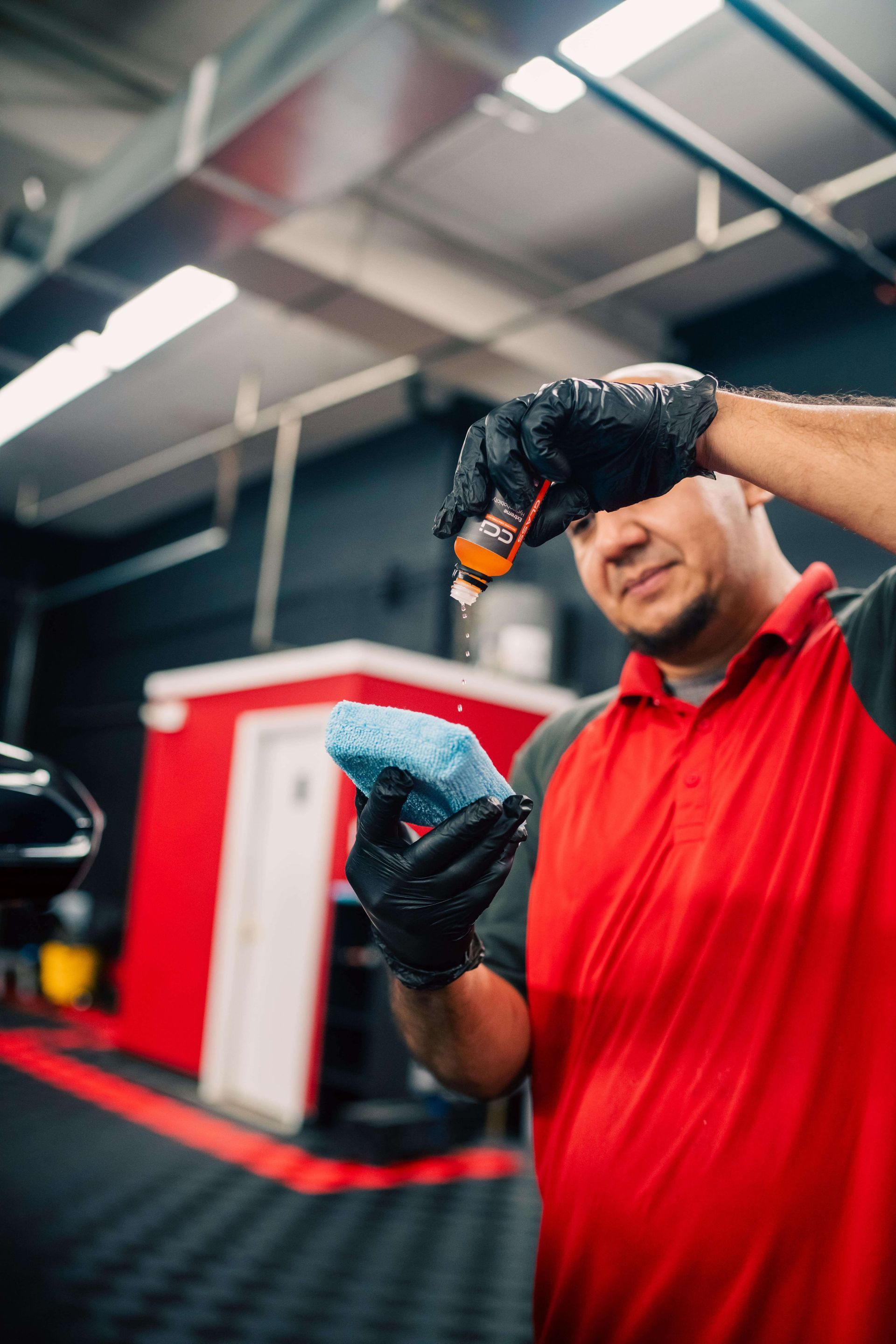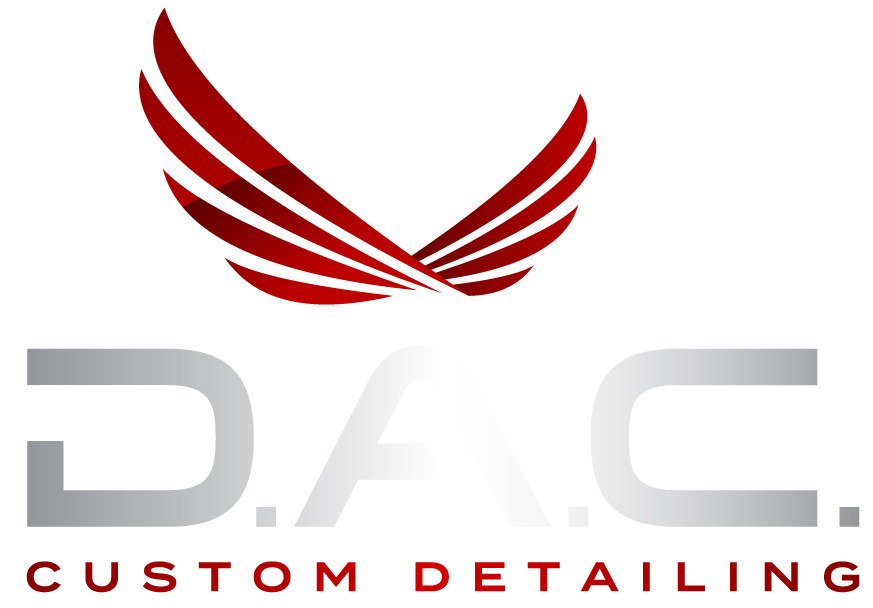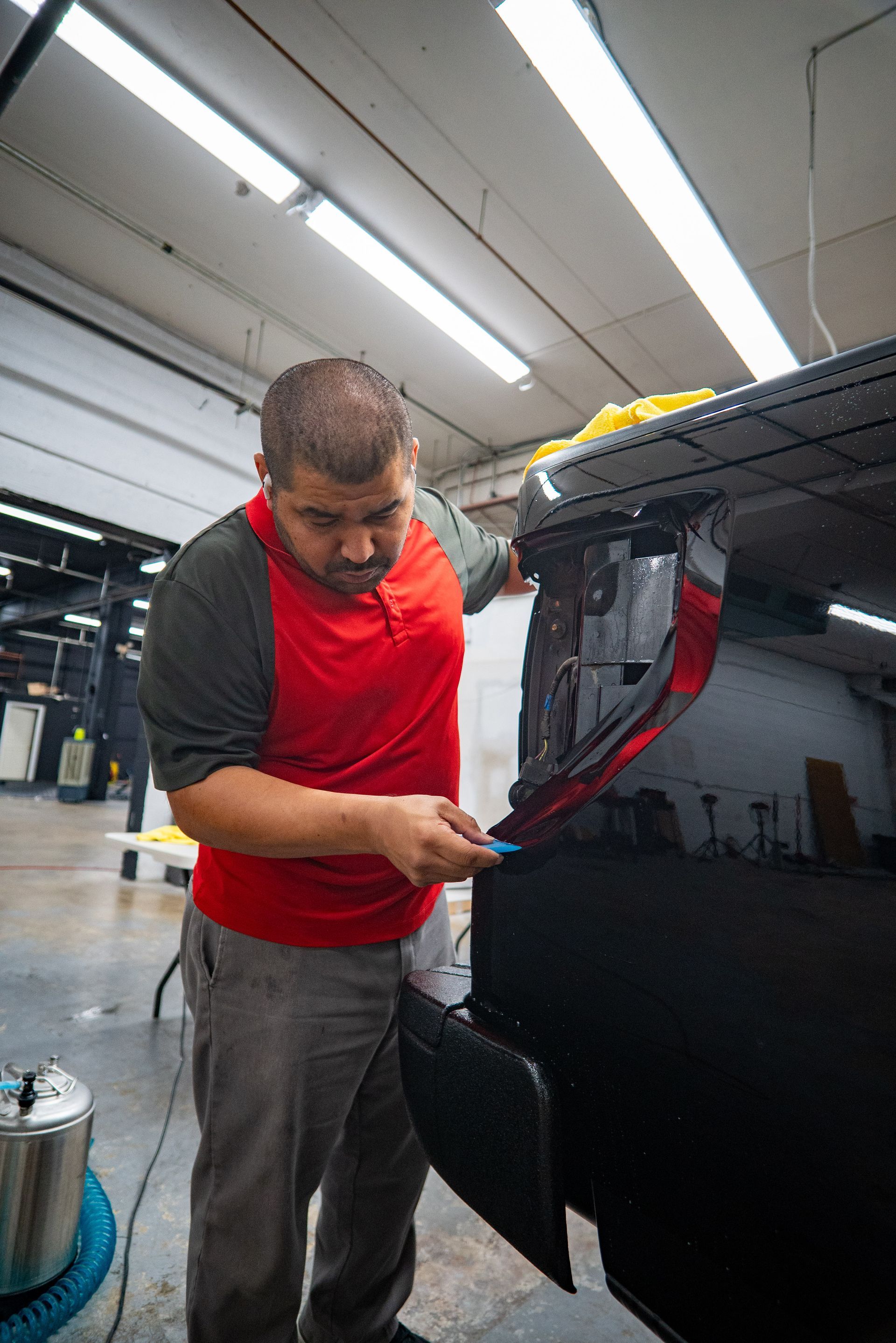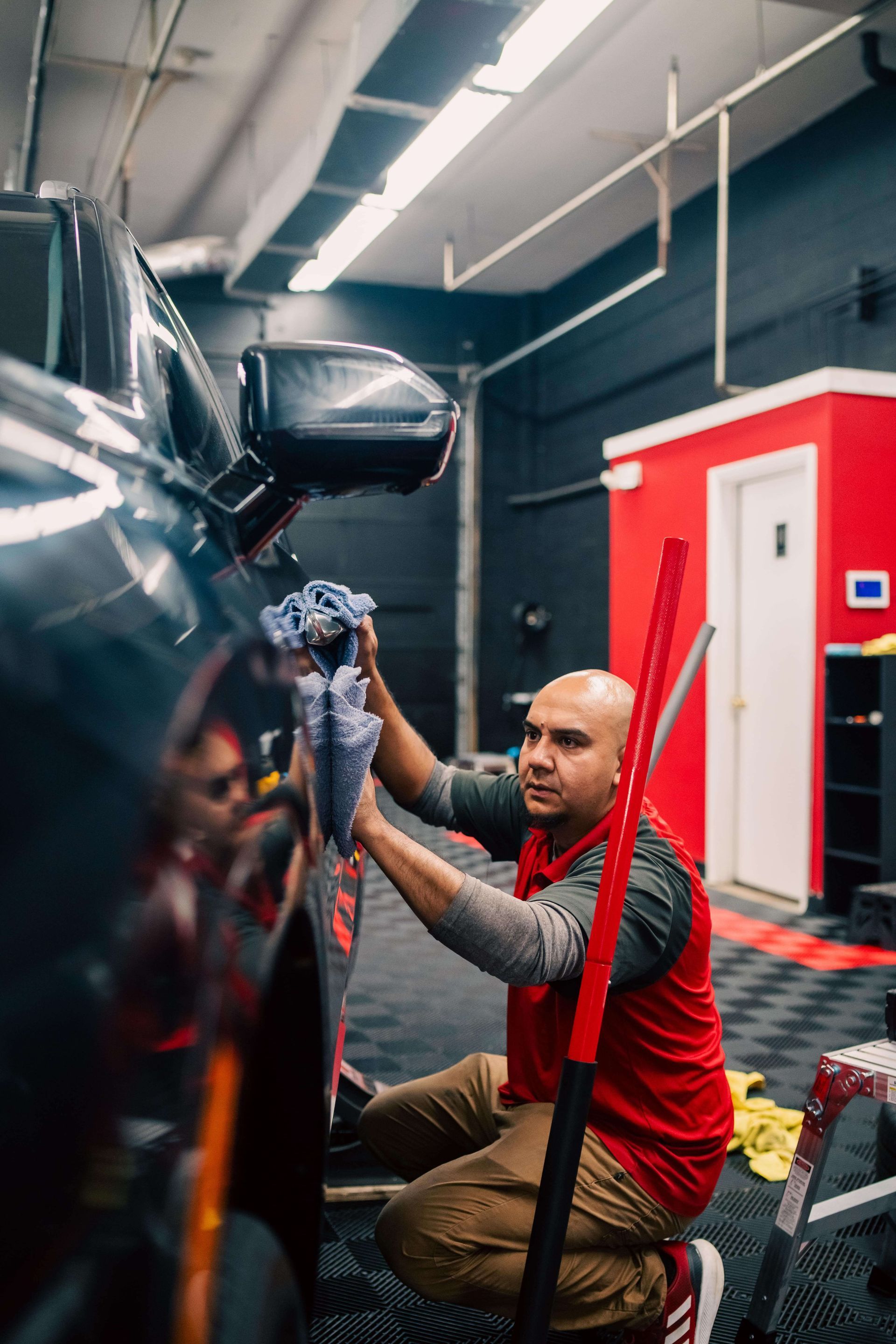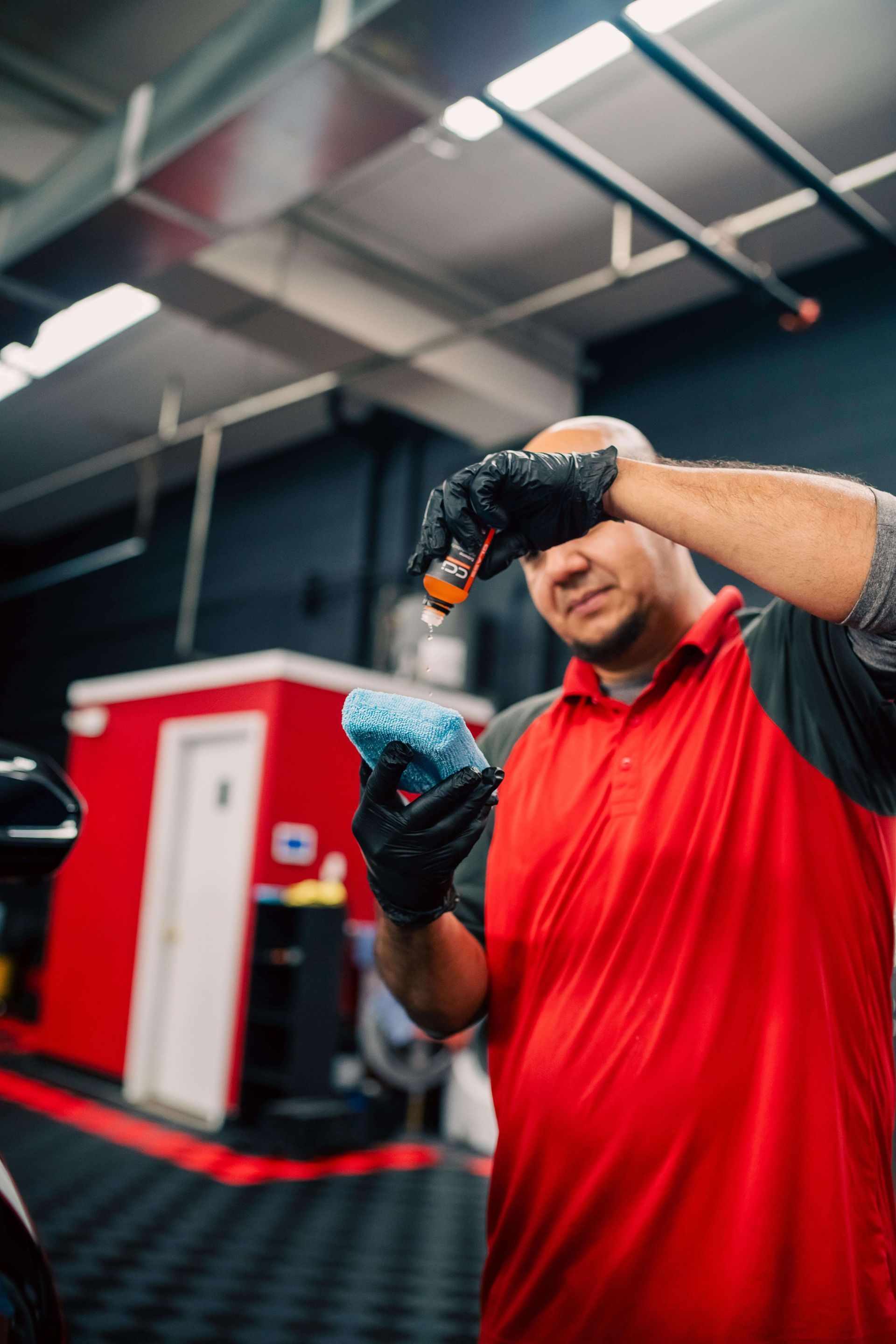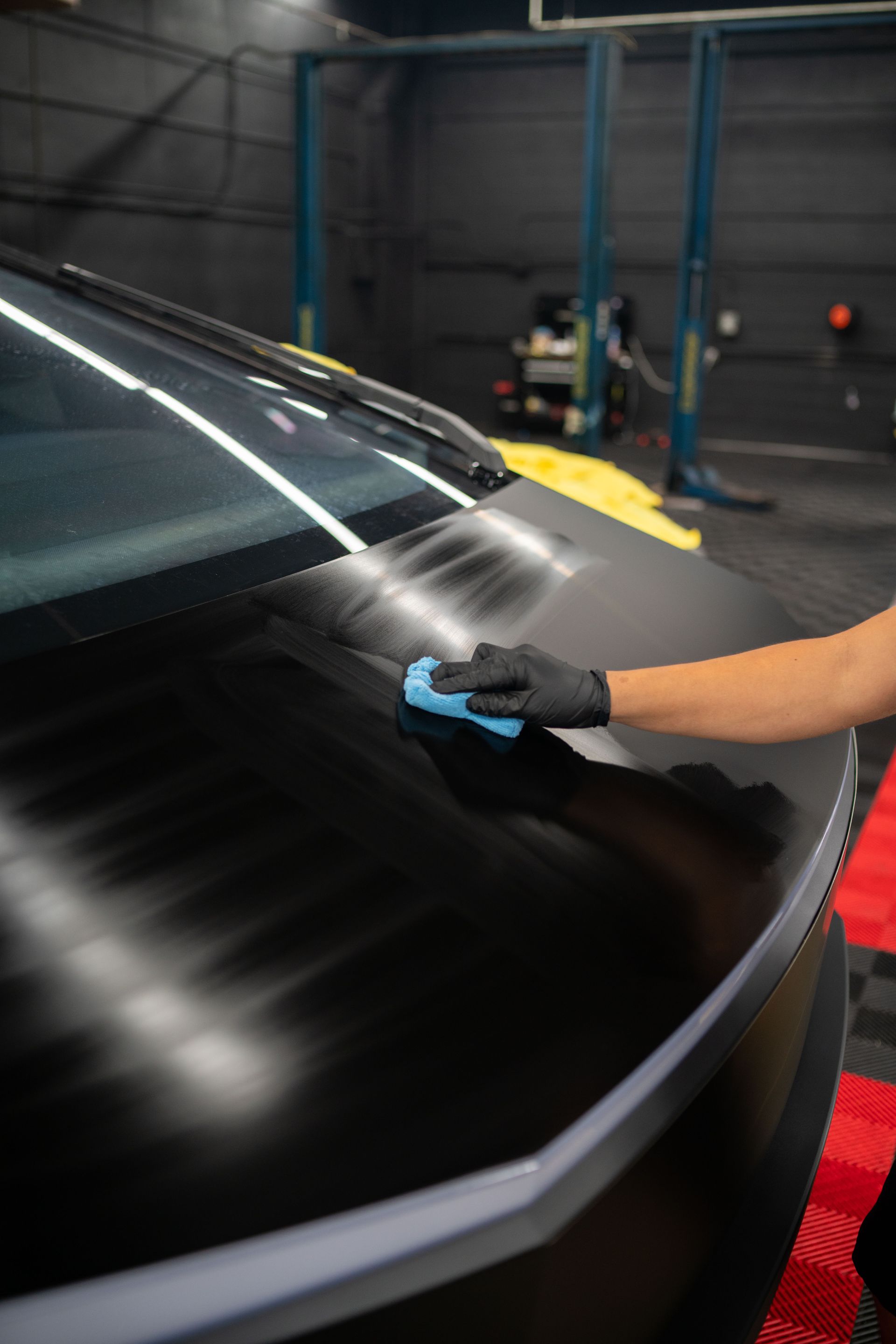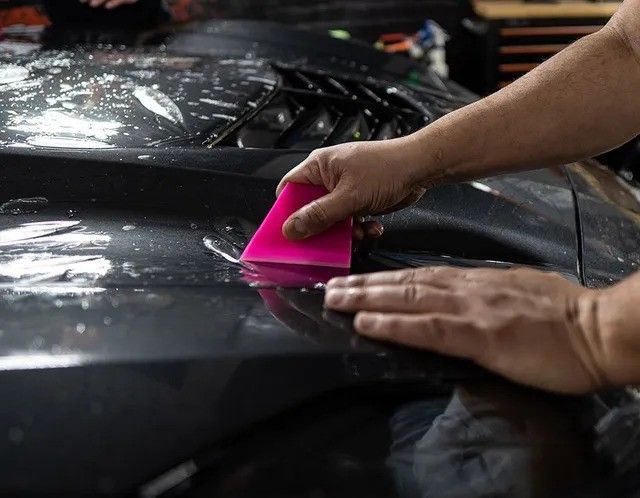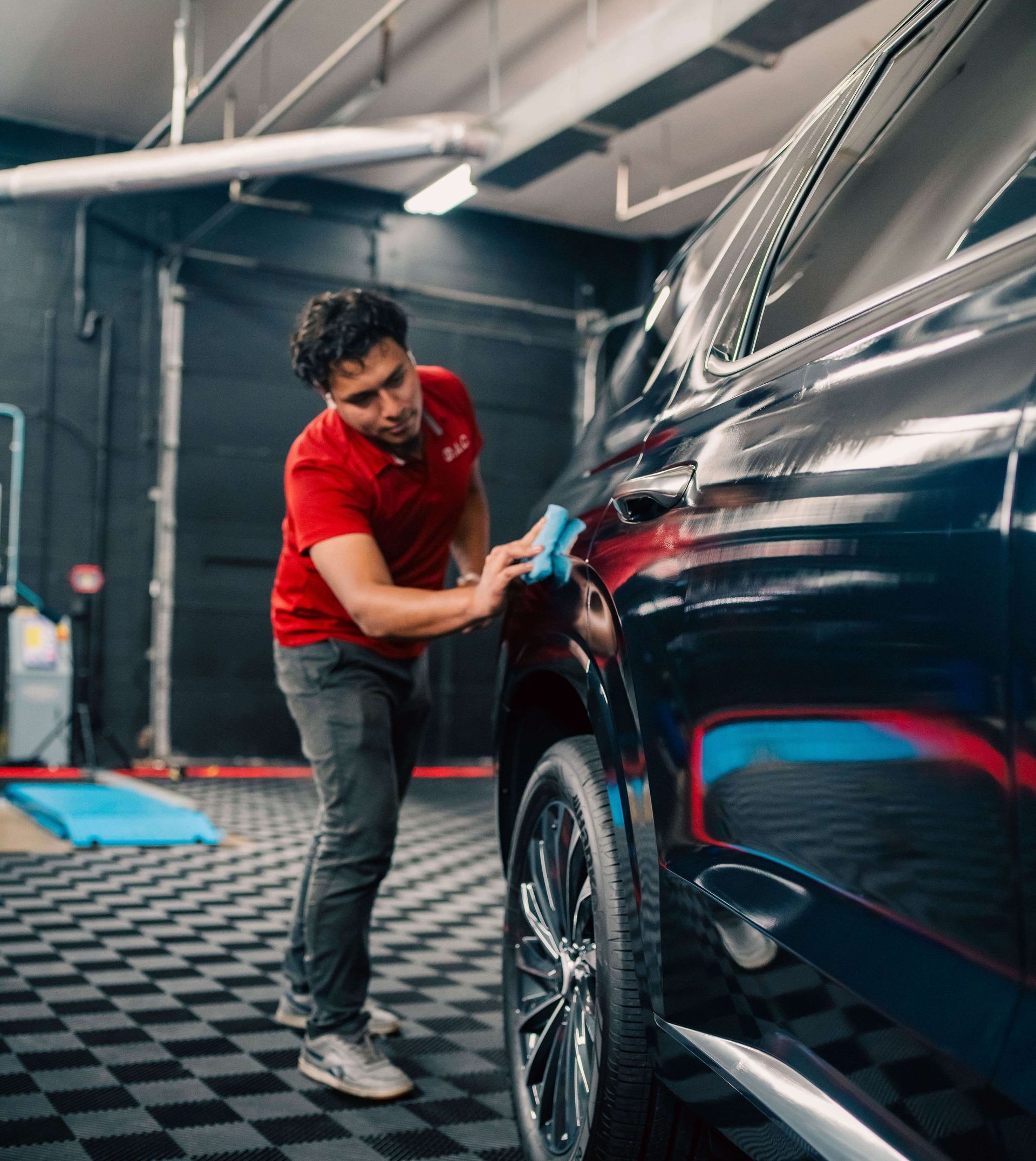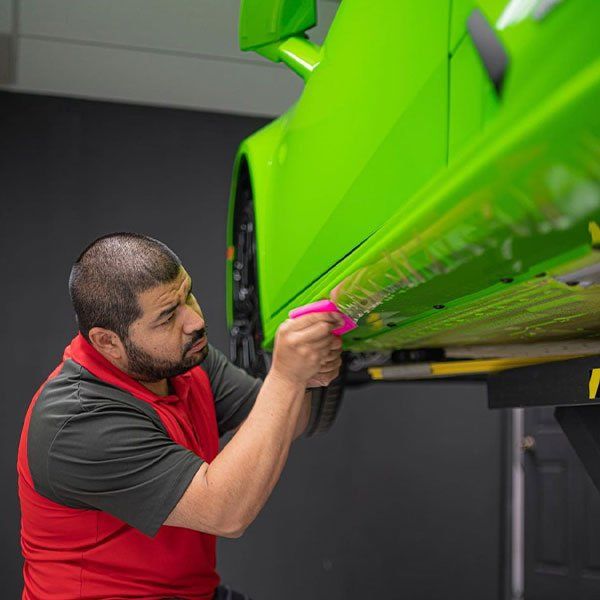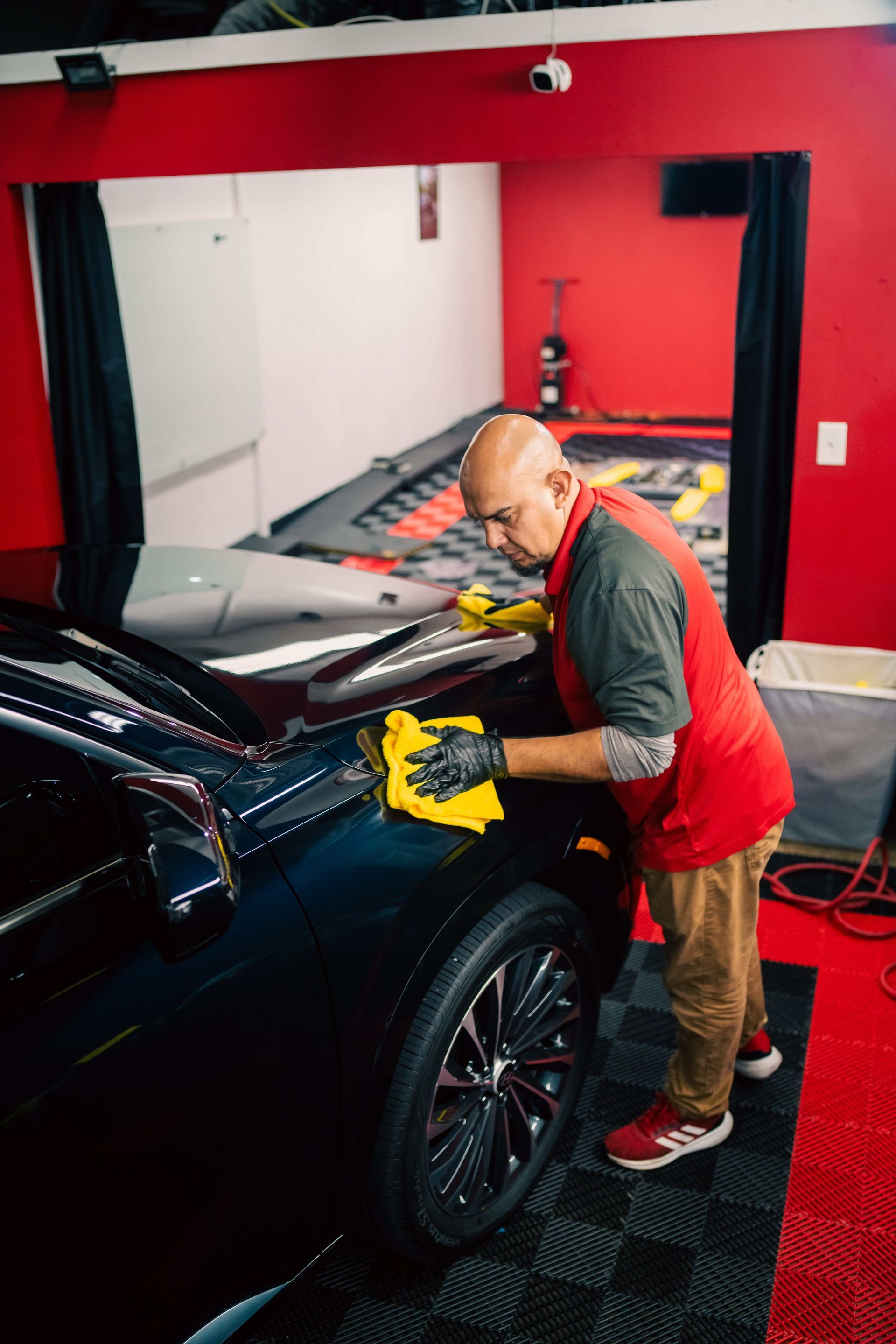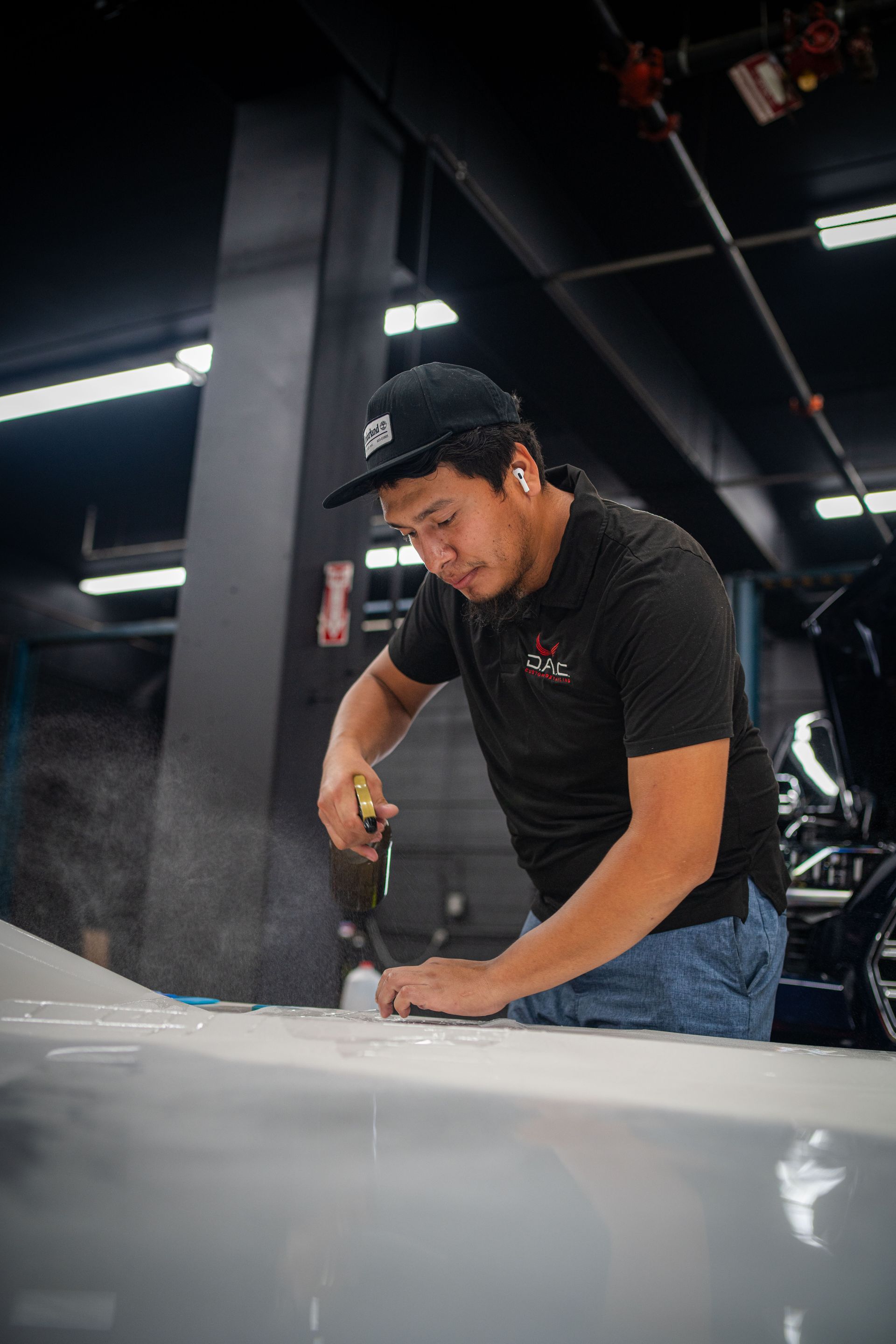REVIVE, PROTECT, MAINTAIN
Paint protection film (PPF) may initially appear to be an optional upgrade for automotive enthusiasts, but it is increasingly recognized as an essential component of comprehensive vehicle care. Many car owners are all too familiar with the frustration of discovering a minor chip or blemish on their vehicle's exterior. PPF provides a practical and effective solution to preserve the vehicle’s appearance and maintain its value over time.
The adhesion of paint protection film to vehicle paint is primarily achieved through an acrylic adhesive layer that has an initial bond strength considerably lower than that of automotive paint. This specific design allows for a secure yet removable application, ensuring that when the PPF is removed, the original paint remains intact without damage, thus preserving the vehicle's aesthetic and resale value.
Multi-Layer Composition of PPF
At the heart of PPF’s protective abilities lies its unique multi-layer design, comprising four distinct layers, each contributing essential qualities. Think of it as an intricate armor system that protects your vehicle's exterior from minor scuffs and harsh environmental conditions.
- Self-Healing Topcoat: The first line of defense in this setup is the self-healing topcoat. This layer not only acts as a barrier against minor scratches but also employs remarkable technology that allows it to "heal" when exposed to heat, like that from sunlight. If you accidentally brush against a bush or get a light scratch from someone else's bag, it can magically disappear without any trace. For instance, the renowned brand showcases this self-repair phenomenon, erasing light scratches in under an hour under direct sunlight.
- Polyurethane Core: However, the magic doesn’t stop there; beneath that top layer is what we call the polyurethane core. This core layer is essential for PPF’s ability to endure impacts and abrasions. Polyurethane is celebrated for its elasticity and strength—qualities that make it exceedingly effective at protecting your vehicle’s paint. Imagine your car parked at a shopping center, just narrowly escaping a rogue shopping cart; the core absorbs this force without compromising the integrity of the underlying surface. Polyurethane can tolerate impacts upwards of 7 MPa without showing any deformation, ensuring that even if you face bumps along the road, your paint remains unscathed!
- Acrylic Adhesive: This layer plays a crucial role in securing the film to your vehicle’s paint. Its composition is carefully designed to provide strong initial adhesion while also allowing for clean removal without damaging the underlying paint—an important factor in preserving your vehicle’s appearance. Typical bond strengths for high-quality adhesives begin around 0.0753 MPa and gradually increase to approximately 0.17 MPa over time. Given that automotive paint generally has a strength between 16 and 25 MPa, this characteristic ensures the film can be removed safely, leaving the original finish unharmed.
- Release Liner: Lastly, we can't overlook the importance of the release liner. The release liner serves as an important protective layer before application, safeguarding the adhesive to ensure it's clean and effective when it’s needed. It prevents dust and debris from compromising adhesion during storage or handling. Without this liner, applying PPF could lead to unwanted results or subpar adhesion, making it a crucial element of the overall system.
The exploration of these four layers not only demonstrates how PPF functions effectively but also sets the stage for discussing another key aspect: how it interacts with various automotive coatings.
Interaction with Automotive Coatings
The bond between paint protection film (PPF) and automotive coatings involves intricate dynamics, making each interaction unique depending on the type of coating applied to the vehicle. These coatings can dramatically influence PPF adherence, essentially determining its longevity and overall performance. For instance, clear coats are ubiquitous in modern vehicles, providing that glossy finish we often admire. They not only enhance appearance but also serve as a critical surface for the acrylic adhesive layer in the PPF. This smooth surface facilitates strong bonds, ensuring that the film can efficiently protect against everyday hazards like scratches and chips.
However, things get more complicated when we step into the realm of ceramic coatings. Renowned for their hydrophobic properties—essentially making water bead off them—ceramic coatings can present challenges for adhesive application. When it comes to bonding PPF onto these surfaces, the mismatch in adhesion abilities can lead to lifting if not managed correctly. Fortunately, advancements in adhesive technology have been pivotal in overcoming this hurdle. Modern PPF formulations now feature enhanced compatibility with ceramic coatings, enabling them to stick more reliably even under these conditions.
But while ceramic coatings prove beneficial for their waterproof features, one must be wary of waxes and sealants that can strip away adhesion potential. Waxes and sealants create a slick, polished surface aimed at enhancing shine, but they do little to assist in forming a strong bond between paint and film. Applying PPF over a waxed surface is akin to trying to paint a wet canvas; it's bound to result in failure regardless of how effective the film itself may be. Therefore, proper cleaning before application becomes imperative—not just a quick dusting off but rather an intensive wash and decontamination process to remove any residual wax particles or lingering contaminants from the surface. Remember that every detail matters when applying PPF; even something such as optimal environmental conditions—like ideal temperatures and humidity levels—can significantly affect the final adhesion process.
Chemical and Physical Bond Mechanisms
Adhesion of paint protection film is an elegant dance of both chemical and physical mechanisms, working in harmony to create a strong attachment to your vehicle’s paint. This interplay is essential; without it, PPF would struggle to withstand the rigors of daily driving, from harsh weather to minor road debris.
Chemical Bonding
The acrylic adhesive layer present in PPF engages in chemical bonding with the paint at a molecular level. The adhesive isn't just simple glue; it's a sophisticated layer that uses forces to grip the paint. While these forces are relatively weak individually, when many such interactions occur simultaneously, they effectively hold PPF securely during normal use conditions. It is essential for users to understand that while these bonds don’t provide immense strength alone, they play a critical role in the overall adhesion mechanism, contributing significantly to its durability. Furthermore, studies have shown that using primers or adhesion promoters can leverage these natural forces, increasing bond strength by as much as 20% to 40%. This effect is particularly beneficial when applying PPF over painted surfaces exposed to varying environmental conditions.
Physical Bonding
Physical adhesion works differently yet complements chemical bonding beautifully. When the adhesive layer is applied to the paint surface, it conforms to the microscopic contours present on every vehicle's finish. Think of this process as filling gaps—wherever there’s an uneven surface or tiny imperfection, the adhesive seeps into those spaces, creating a mechanical interlock. This cohesion enhances overall bond strength and adds resilience against peeling or lifting from environmental factors. Interestingly, maximizing surface roughness can lead to a potential increase in adhesion by up to 30%. This means that the smoother your car's paint is before application, the less effective the physical bonding may be. Moreover, optimal conditions for applying PPF include working within temperatures between 60°F and 80°F (15°C to 27°C). Within this range, you’ll find that both mechanical and chemical processes operate more efficiently than ever!
Maintenance Post-Application
Proper care and maintenance can significantly extend the life of paint protection film while preserving its visual appeal. Think of it as taking care of a new pair of shoes; if you want them to last, regular cleaning and mindful handling are key. For your vehicle's PPF, such maintenance involves washing routines, protecting against environmental elements, and being aware of various factors that can affect the film.
Routine Maintenance Tips
- Regular Washing: It’s crucial to wash your car frequently using pH-neutral soaps designed for automotive use. These products gently clean the surface without damaging the delicate layers of the PPF. Avoid soaps with harsh chemicals or high acidic content, as these can wear down the film and diminish its protective qualities.
- Avoiding High-Pressure Washers: While it may be tempting to blast away dirt with a high-pressure washer, resist that urge! High water pressure can inadvertently lift the edges of your PPF, leading to peeling or bubbles forming beneath the surface. Instead, opt for gentle rinsing with a lower pressure setting or a bucket of soapy water and a soft sponge.
- UV Protection: Sunlight is one of the major adversaries of your car's finish, including the PPF. Whenever possible, park in shaded areas or use a car cover when you're not driving. This habit minimizes UV exposure, which protects the film and keeps the underlying paint from fading.
- Professional Inspections: Scheduling an annual inspection with a professional is highly beneficial. These experts check for problems like lifting or bubbling early on—issues that can worsen if left neglected. Their experience allows them to offer targeted solutions based on their thorough understanding of PPF materials and guidelines. Additionally, they might provide insights on whether specific areas need reapplication or touch-ups to maintain optimal performance.
As we invest in high-quality films for protection, maintaining those investments grants peace of mind, knowing our vehicles remain shielded from life's little mishaps.
Innovative Trends in PPF Technology
One of the most exciting developments in paint protection films is the introduction of hydrophobic coatings. These coatings allow water to bead up and roll off the surface, effectively repelling dirt and grime. This method not only keeps your car cleaner for longer, but it also reduces how often you need to wash it. Imagine being able to wash your car less frequently without sacrificing its showroom shine; this is an advantageous solution for busy car owners! Trusted brands have pioneered this technology, making it a staple feature in their latest PPF offerings.
Beyond just keeping your vehicle clean, advancements have made PPF more adaptable. The enhanced flexibility of modern PPF materials is another significant trend worth noting. Historically, applying PPF could be cumbersome, especially on vehicles with intricate curves and unique contours. Newer films are designed to stretch significantly without tearing or losing adhesion. This adaptability simplifies installation and ensures better coverage on any surface without unsightly seams. By allowing installers to work more seamlessly, this improvement translates to a more polished final result, enhancing both the aesthetics and protection of your vehicle.
Sustainability is another key focus area as industries shift to eco-friendly practices. A growing trend in the industry is the development of bio-based adhesives derived from renewable resources. These environmentally conscious adhesives perform just as effectively as traditional options while reducing the carbon footprint associated with production. The move toward these alternatives reflects a broader commitment within automotive care—from manufacturers and consumers alike—to protect both vehicles and the environment equally. The goal is to make these innovations popular and appealing to eco-conscious consumers.
With these advancements propelling PPF technology forward, one can only imagine what further innovations lie ahead. As demand for vehicle protection continues to escalate, we can anticipate even more breakthroughs aimed at improving durability and ease of application while minimizing environmental impact. Perhaps we'll see smart films integrated with monitoring systems alerting owners when a film needs maintenance or replacement—further exemplifying how far technology has come and where it's heading.
In conclusion, the evolution of PPF reflects a commitment to both innovation and sustainability in vehicle protection technologies, hinting at an exciting future for automotive care.
Shield Your Shine with Precision PPF
Protect your vehicle from the daily grind of the DMV’s busy roads with
expert paint protection film services
from D.A.C. Custom Detailing. Our team applies top-tier PPF with precision, creating a nearly invisible barrier that helps defend against rock chips, road debris, and weather-related wear. Whether you're cruising through the city or tackling long commutes, our advanced protection keeps your finish looking flawless.
Book your appointment today and experience the confidence of driving with professional-grade defense!
Share with friends
